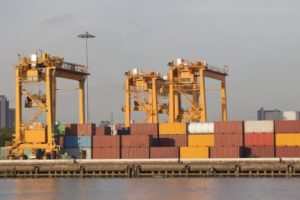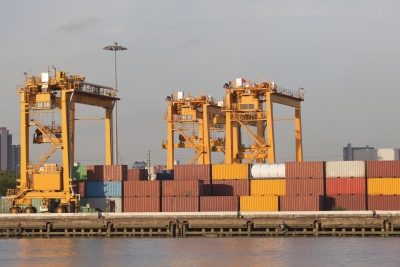 Global ocean shipping e-marketplace INTTRA is providing an electronic tool to enable port stakeholders to comply with the mandatory container weighing rule that will come into effect on July 1.
Global ocean shipping e-marketplace INTTRA is providing an electronic tool to enable port stakeholders to comply with the mandatory container weighing rule that will come into effect on July 1.
The electronic VGM (verified gross mass), or eVGM, was developed by INTTRA to allow the smooth transmit of VGMs to carriers by shippers in compliance with the amended International Convention for the Safety of Life at Sea (SOLAS) requirement that mandates verifying the container weight.
Under the revised SOLAS policy, shippers may communicate the VGM in three ways—through the shipping line’s website, third-party ports system such as INTTRA, and email. Without the VGM, a packed container will not be allowed aboard the vessel come July 1.
“We have worked with the industry at a global level, with carriers and freight forwarders that are members of our network, to establish the most common and effective electronic transmission for this,” INTTRA vice president for Asia Sales John Vitkus told Manila media in an interview on June 16. INTTRA’s network currently includes 54 carriers and non-vessel operating common carriers, as well as 220,000 subscribers globally.
Vitkus added that eVGM “probably has the most robust solution and it is being integrated to many of our clients.”
The eVGM features a dashboard with real-time eVGM submittal, including time stamps and alerts. It can also update or resend eVGM entries and view verification status in real time while allowing subscribers to download reports with audit details.
Under the SOLAS policy, there are two ways to determine the VGM of a packed container: Method 1 requires weighing the container after it has been packed, while Method 2 requires weighing all the cargo and contents of the container, and adding those weights to the container’s tare weight as indicated on the container door.
eVGM supports multiple weighing scenarios and several submission use cases–including support of third-party or authorized submissions. It enables submission through multiple channels (web online, mobile, EDI, or web service), delivering the VGM EDI message directly to carriers, or emailed PDFs for non-integrated carriers. The system does not require booking requests or shipping instructions to be sent via INTTRA.
INTTRA is also partnering with transportation management system providers, such as Kewill and Magaya, in order to support their customers with eVGM integration through INTTRA.
Vitkus said no other system is currently providing services similar to eVGM.
He said subscription to eVGM will start on August 2016, which means usage of the system will be free until July 31 so clients can “be comfortable with the offering and be compliant.”
After the free trial, subscribers can either “avail of an annual license charge like what we’re doing for large clients, as well as 50 cents per container for smaller clients.”
Meanwhile, asked about concerns of their clients regarding the VGM policy, Vitkus said that for carriers, they are “very interested in the support and execution of the IMO because it makes their life easier on the ship.”
For shippers and freight forwarders, on the other hand, it is seen as an additional regulation. He noted that “any new law takes time for people to understand,” but added that the new regulation “really is for the safety of the industry.”
Vitkus last week met with INTTRA’s customers and potential clients in the Philippines to introduce eVGM.
Aside from eVGM, INTTRA offers a diverse portfolio of fully integrated shipping technology solutions, including container booking, ocean schedules, shipping instructions, shipping orders, electronic invoicing, and decision support dashboard. – Roumina Pablo
Image courtesy of khunaspix at FreeDigitalPhotos.net





